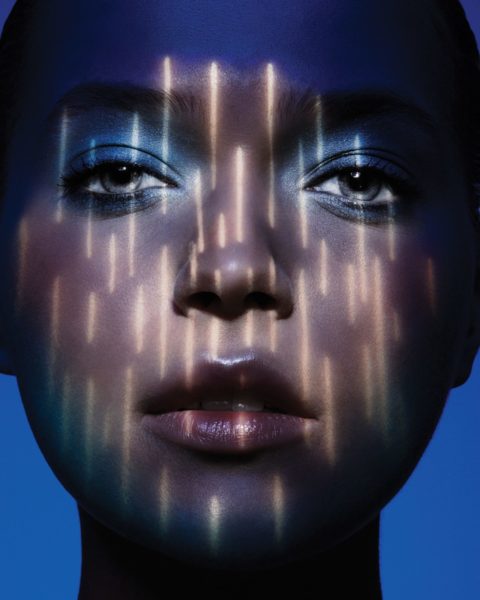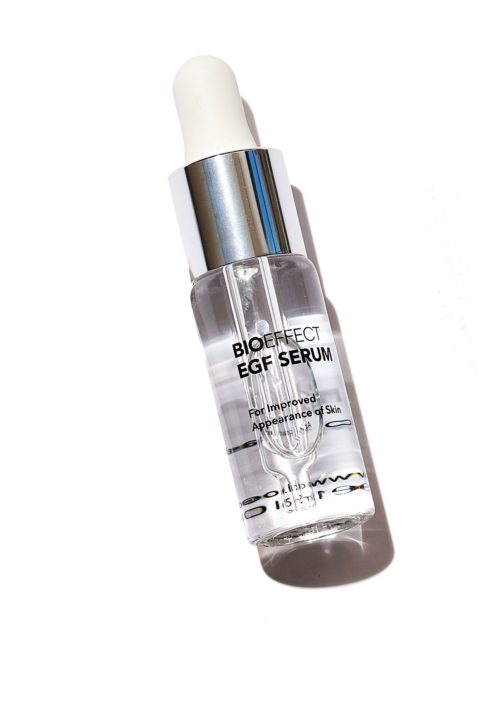When Is a Facial Not Just A Facial? When It Gets High Tech. We Try 3.
I once enjoyed a memorable facial at a lovely spa in Toronto. The facialist applied a well-perfumed procession of cleansers, oils, serums, gommages and masks—all of which, I was told, in tones as soft and comforting as a fluffy white robe, would prove both calming and vitalizing. The hour-long treatment was delightful in the way that lying down for an hour in the middle of the day is a delight.
But the treatment came to an anxiety-inducing $300, which made me wonder: Did I just drop hundreds of dollars to have my face washed and moisturized while I napped?
Until recently, even the fanciest of facials tended to follow the classic cleanse-steam-mask method, but with the development of innovative high-tech gadgets and treatments—from collagen-boosting LED light therapy pioneered by NASA to a hyaluronic acid-infused mask inspired by 3D printing—facial menus are starting to sound like they’ve been developed in Silicon Valley, with noticeable results that last longer than 24 hours. Which makes shelling out for some face time with one of these next-gen complexion fixers feel like a more worthwhile investment. Here are three of the latest futuristic facials on our radar.
Seconde Peau
New to Canada from family-run French company Biologique Recherche, this treatment feels like the Givenchy dress of facials. The company spent 10 years researching and developing a hyaluronic-acid electro-spun machine inspired by 3D printer technology that weaves hyaluronic-fibres into delicate fabric. (Leave it to French scientists to fashion facial patches that look like tulle.)
As I lie on a spa table, my face veiled in strips of what looks like surgical gauze, I feel like a soap opera character about to be unbandaged after some kind of face-transplant operation (revealed to be another actor). The comparison, it turns out, is not as preposterous as it sounds. This Seconde Peau treatment was inspired by medical procedures used to treat burn victims.
Dr. Philippe Allouche took over the company from his father, Yvan, and his experience in internal medicine and intensive care units inspires some of the brand’s high-tech treatments. The bandages adhering to my fine lines and wrinkles are not gauze but the aforementioned hyaluronic acid set to fabric. (The hyaluronic acid in Seconde Peau is 40 times more concentrated than the kind you’d find in conventional cosmetics and works to douse your skin with moisture, lubricate the collagen and tighten the contours of your face rendered lax with age.)
When my facialist removes the patches and theatrically presents me with a mirror, I feel I should suddenly look like a young Catherine Deneuve (I do not). But my face does look plumper and smoother and petite-of-pore. As I leave the salon, I resolve to be more French—I will streamline my toilette, only wash my face with cold water (Biologique Recherche, in fidelity to the structures of the raw ingredients, uses mostly cold formulations), and, say, eat more endives.
Eygló
Launched in Canada last August, Icelandic brand Bioeffect’s treatment Eygló (which means “eternal glow”) is the futurist’s facial. (Björk and Marion Cotillard are fans of the products.) In 1986, scientists won the Nobel Prize in medicine upon discovering the epidermal growth factor (EGF)—a human protein responsible for healing the skin and for producing collagen and elastin. But although EGF stimulates cell regeneration, traditional methods used to produce these small proteins can involve bioengineered E. coli, animal cells and human tissue, rendering it unsafe for cosmetic use. So a team of Icelandic scientists, after 10 years of research, cracked the EGF code and created a safe and pure form of EGF inside the seeds of a barley plant.
Bioeffect is the first skincare line in the world to use plant-made human growth factors. “In developing an anti-aging skin line, you can either use a library of thousands of ingredients that the skin cells have probably never come in contact with before or you can communicate with the cells,” explains Dr. Björn Örvar, chief scientific officer and co-founder of Bioeffect. He opted for the latter approach.
Through biological pathways natural to the skin, EGF “speaks the language of the skin,” he says. In geothermal greenhouses outside of Reykjavík, barley is grown in volcanic pumice and watered by pure Icelandic spring water to produce the company’s revolutionary EGF. The resulting serum is as crystalline as a glacial puddle and is packaged in darling elf-sized glass bottles.
“There are only seven ingredients in the serum,” facialist and medical aesthetician Machael Varricchio tells me, my cheeks slick with the cellular activator and veiled in Korean red seaweed (used to chaperone the serum and stimulate collagen production). The stuff is designed to treat aging skin as wrinkle-ridged and craggy as the topography of Iceland. “You look radiant and glowy,” a barista at my local volunteers the next day, apropos of nothing.
My Blend Facial Treatment
The ne plus ultra of facials, the My Blend Facial Treatment at Spa My Blend by Clarins at Toronto’s Ritz-Carlton Hotel is based on the idea that facials, like fashion, should be tailor-made—a sort of facial fantasy in three acts. It involves a trifecta of high-tech (and highly effective) electro-stim treatments. My facialist, Sumi, appraises the state of my visage and establishes that my pores (like the rest of my person) are tired. From an assortment of products, Sumi selects a few, mixing my personal concoction like a cosmetic barista.
Then comes the cryo-tech device, which feels like your face is being caressed by cool, polished stones. This cold treatment is a kind of controlled hypothermia that lowers your body temperature to de-puff any under-eye valises (or, in my case, U-Hauls).
Next comes a vibrating flat-crowned wand that feels (oddly) like a massage chair for your face. Sumi applies the oscillating device to my wrinkles, passing over certain areas with particular vigour, as if trying to iron out stubborn pleats in a pair of dated chinos. The process is meant to plump and reshape, as well as stimulate blood circulation and lymphatic drainage. Sumi then outfits me with an LED mask. Lit red, it evidently both calms and stimulates collagen and elastin production (my fibroblasts, it turns out, are also fatigued).
All told, it’s better than a nap. And as the mother of a toddler, that’s saying a great deal.











